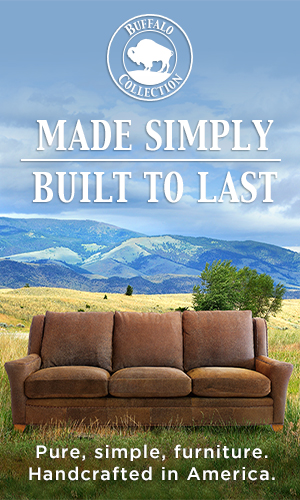By Aimee Welch
It takes more than a green thumb to make a garden grow in Arizona, but from Phoenix’s sweltering desert to Flagstaff’s sub-alpine climate, many gardens are thriving. With a little patience, a lot of research, and perhaps some trial and error, unrelenting gardeners have prevailed—veggies, herbs, fruits and flowers are actually growing… in the desert.
But Arizona’s landscape is diverse and no two gardens are created equal. What and when you plant depends entirely on where you live—from sea level up to 7,000 feet in our case. Whether you’re in the desert or mountains, it’s time to start thinking about what’s on the menu for summer. A large variety of crops thrive in warmer temperatures, and if you’re willing to put in the work now, you could be eating the fruits of your labor (herbs and veggies too!) all summer long!
THE LOW DESERT GARDENER
Somewhere around 3,000 feet and below, Arizona gardeners enjoy two growing seasons—spring and fall. With hotter temperatures around the corner, now is the time to transition your garden. This month, compost, fertilize, mulch and plant your warm-season crops. Get those seeds and transplants in the ground so they have time to mature before the scorching summer sun wreaks havoc!
You don’t have to pull up your winter crop if it’s still producing, said Doreen Pollack, a master gardener and owner of Down 2 Earth Gardens in Phoenix. You can still make room for summer produce by interplanting – planting a faster-growing produce next to a slower one to maximize space. Pollack suggests pulling out carrots and other plants that won’t tolerate the summer heat and replacing them with warm-weather crops such as peppers, eggplant and basil. Start some plants in seeding trays indoors or on a sunny porch, then transfer them to your garden as you make room.
If you’ve got the space, you might also choose to use your wilting lettuce leaves to teach your kids about the cycle of gardening life. During March and April certain plants will start to bolt [have a rapid growth spurt] when temperatures rise, signifying the end of their life, Pollack said. Lettuce plants sprout a long stem that flowers and then produces seeds, which you can then collect and save for the next season. Cilantro plants bolt a little later [April/May] and the seeds can then be planted the following season or ground into coriander—a very cool evolution if you have the patience and room to spare in your garden.
THE HIGH ALTITUDE GARDENER
Summer is the primary growing season between 3,000 and 7,000 feet and, after a long, frozen winter, spring fever may be setting in for you and your garden bed. It may still be too cold to literally dig in, but as soon as the snow melts and the soil thaws, you can begin raking, removing debris, mulching and adding poultry compost and manure to prepare your soil for summer, said Brendan Woltman, green goods manager at Warner’s Nursery & Garden Center in Flagstaff.
At an elevation of nearly 7,000 feet, Flagstaff’s average day of last frost isn’t until around June 15, so planting is often delayed until April. The goal is to get your garden in the ground early enough to mature before the dead of summer, but not so early that it’s at risk of a late freeze. That makes March a great time to map out your garden, take a gardening class and do your homework on seed selection and soil preparation.
Planting tomatoes, peppers and other seedlings is another great way to alleviate spring fever and teach your kids where food comes from. Growing their own veggies just might encourage them to eat some! Seedlings need six to eight weeks indoors prior to transplanting to your garden, so check a planting guide and watch your local weather to determine the best time to get them started. For another early spring project, Woltman suggests planting trees, shrubs and bare-root strawberries and raspberries.
If you’re new to gardening in northern Arizona, start with a lot of research and a solid plan. Summer is your one and only growing season, and it’s only about three months, so there’s no time to lose!
THE ASPIRING GARDENER
If “start my garden” keeps getting bumped to the bottom of your priority list, stop the excuses now! “Start small and just do it,” Pollack said. That’s the best way to get over the hump.
The first thing you have to realize about planting in the desert is that it’s possible. Remember, we grow lettuce in winter around here.
Summer is around the corner so either get to learning and doing, or wait for the fall for your big debut. Planting warm weather flowers in the spring is a great way to keep weeds away and prepare yourself and your soil for a fall garden, Pollack said. Not to mention, you’re much more likely to remember to water flowers than an empty bed of soil (and wet, healthy summer soil is important for fall planting)!
Sunflowers and zinnias are very heat-tolerant varieties, and their long taproots help bring life to the soil. While earthworms are busy preparing your soil for fall, you can enjoy fresh-cut flowers and new wildlife all summer long.
Start your research now by visiting a nursery or your local extension office in your county through the University of Arizona to get the basics down. Then choose a good location for your garden and start weeding, adding compost and planting summer flowers. By August or September, you’ll be excited to move “plant my garden” to the top of your priority list!
GROWING ORGANIC
Peter Cure is a registered landscape architect and avid gardener. He grows nearly 50 percent of his family’s fruits and vegetables organically in his garden in Clarkdale. By going organic, you get a much healthier product for just a little more work, said Cure, who also hosts Step Outside, a local television show on Cox 7 Arizona, highlighting landscaping projects throughout the Valley.
Without pesticides and weed killer, your hands are your garden’s best defense. Cure spends mornings in his garden picking tomato hornworms off of his plants, and he regularly aerates and weeds his garden with a hoe. He says keeping plants healthy is the best defense because pests attack stressed plants, not healthy plants. That’s why irrigating regularly and keeping soil healthy are also critical to every garden’s success.







